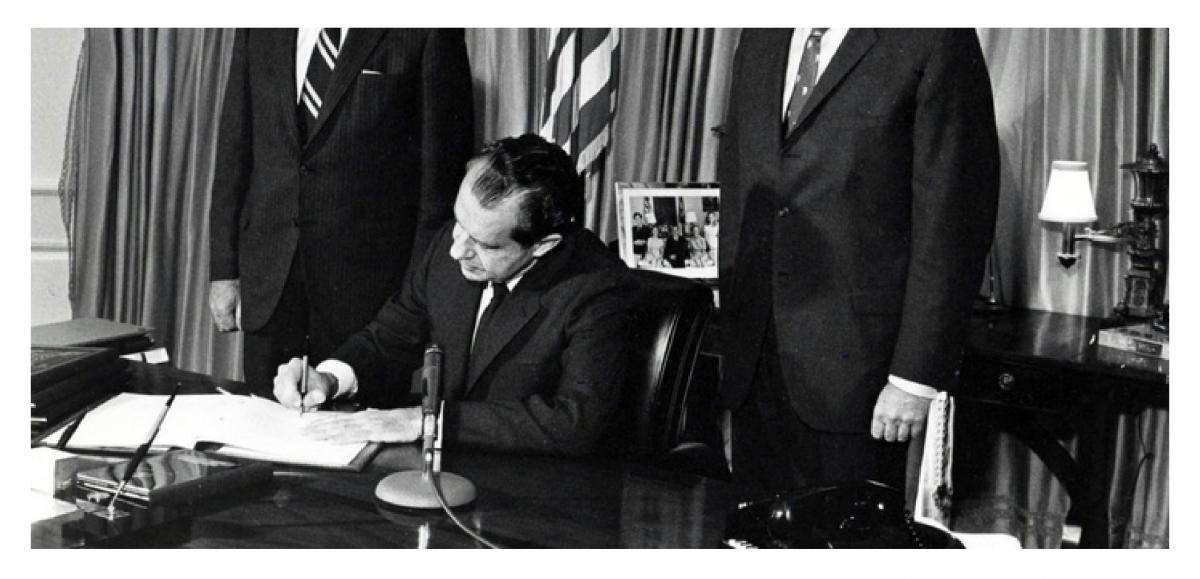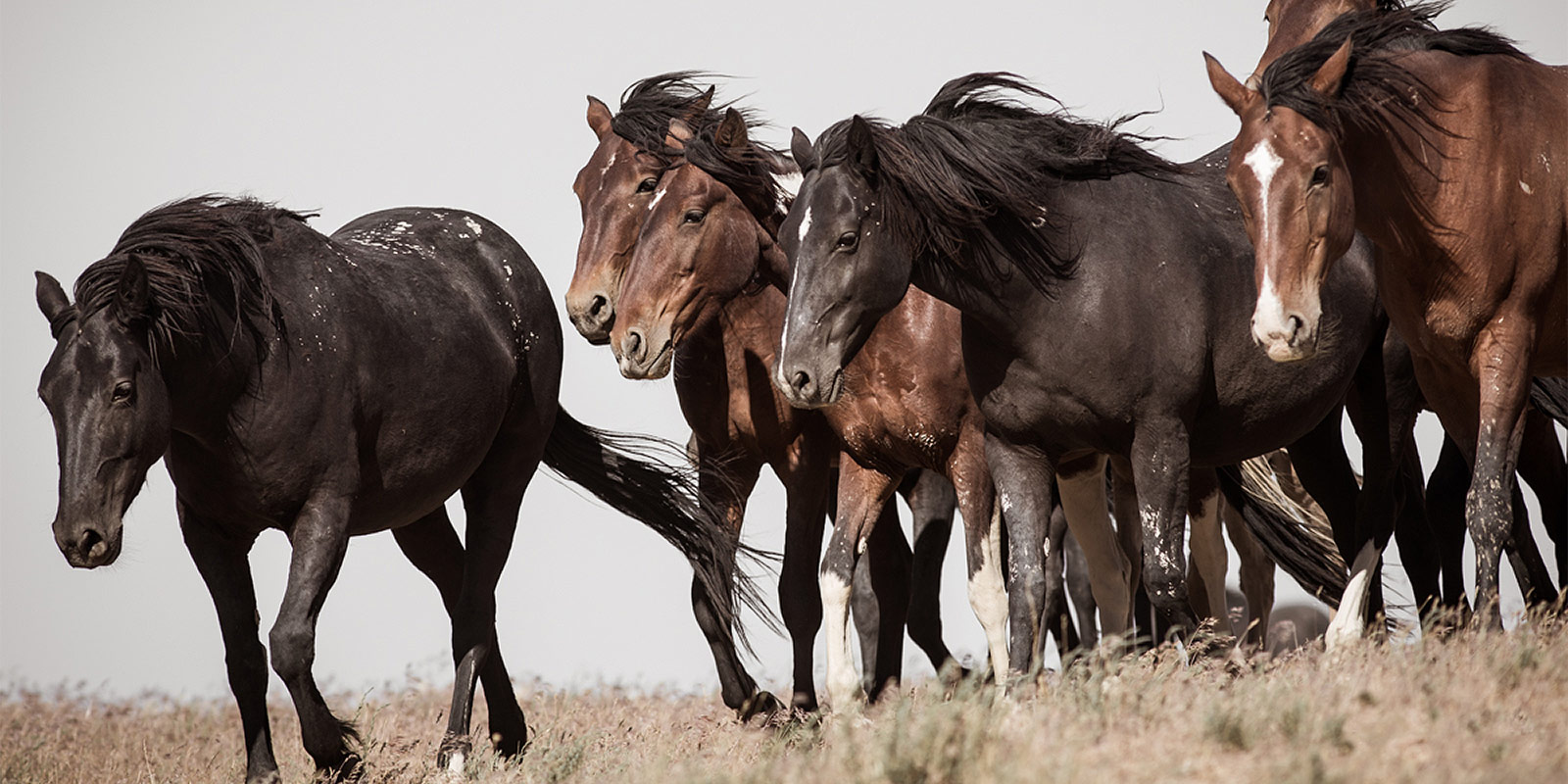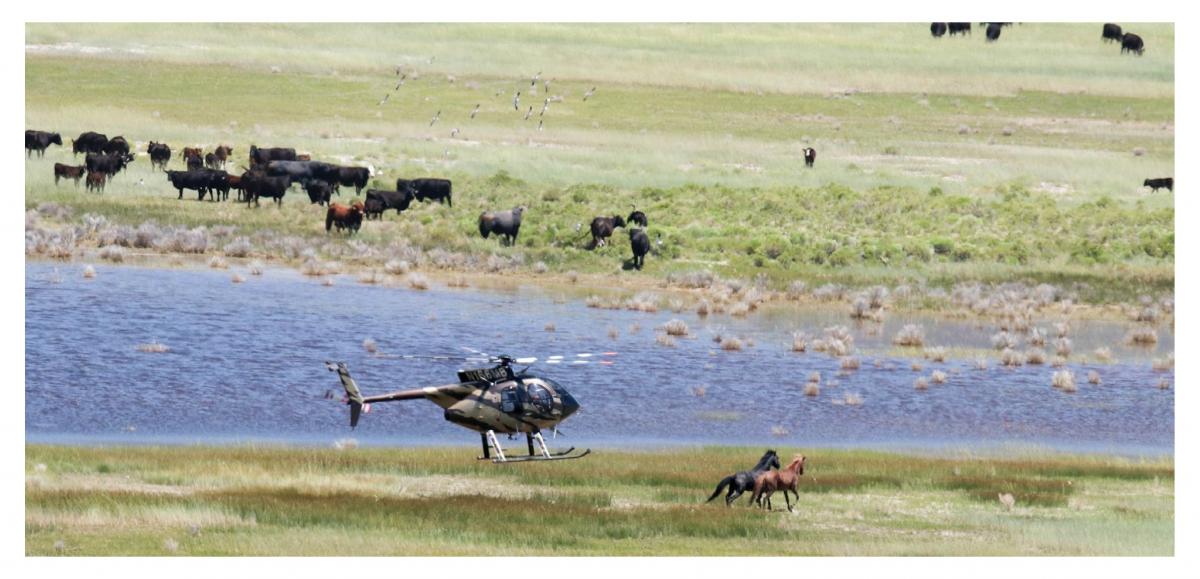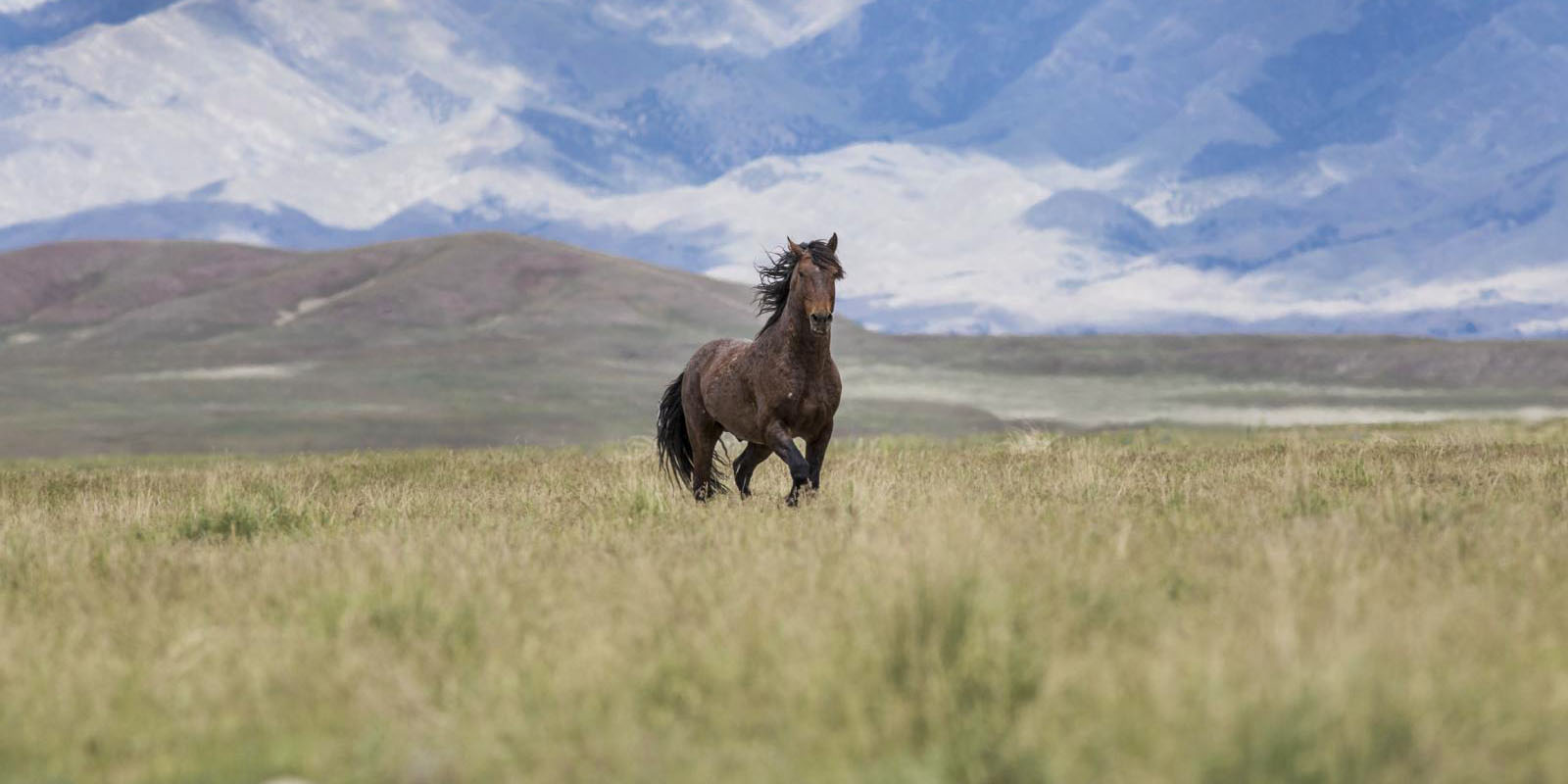The federal government uses costly and cruel practices to eliminate wild horses and burros from our public lands to clear the way for taxpayer-subsidized livestock grazing.

President Richard Nixon signed the Wild Free-Roaming Horses and Burros Act into law on December 18, 1971.
In 1971
Congress unanimously passed the Wild Free-Roaming Horses and Burros Act, a federal law to protect wild horses and burros from “capture, branding, harassment, and death.” Declared “living symbols of the historic and pioneer spirit of the West; that they contribute to the diversity of life forms within the Nation and enrich the lives of the American people; and that these horses and burros are fast disappearing from the American scene.” The Bureau of Land Management (BLM), an agency within the U.S. Department of the Interior, was charged with managing these animals on public lands.
Today
Under pressure from special interests, the federal agency has turned the law on its head, committing the very atrocities Congress sought to protect mustangs against.



